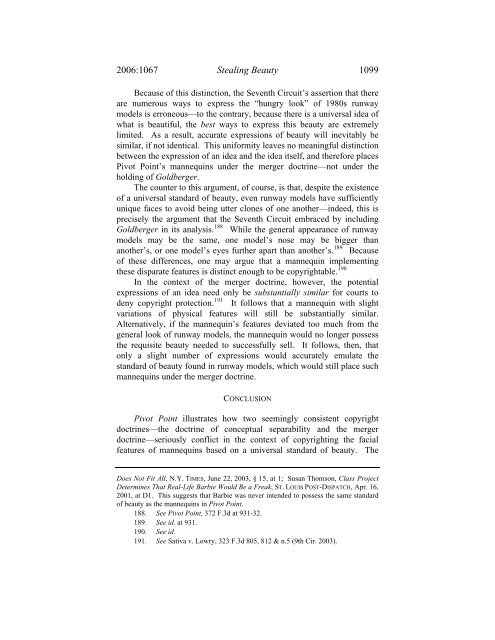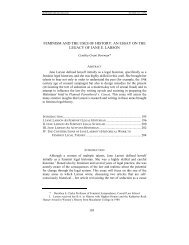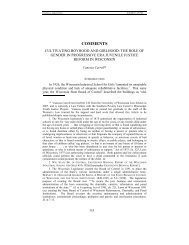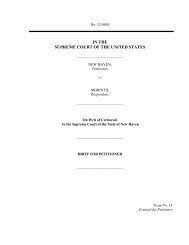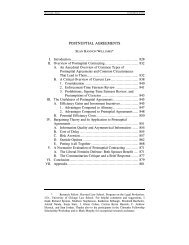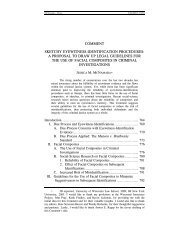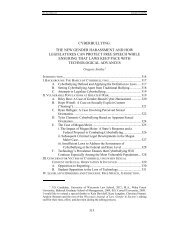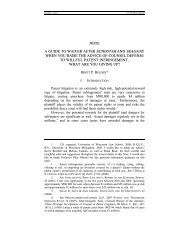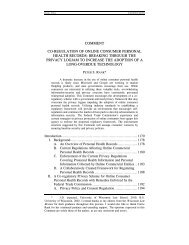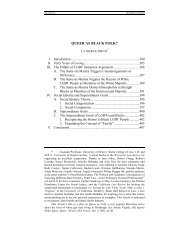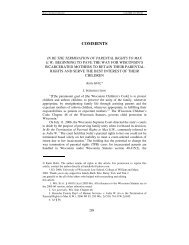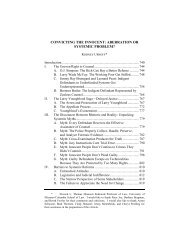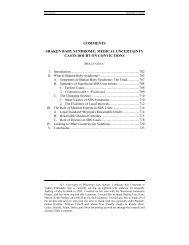Stealing Beauty: Pivot Point International v ... - UW Law School
Stealing Beauty: Pivot Point International v ... - UW Law School
Stealing Beauty: Pivot Point International v ... - UW Law School
Create successful ePaper yourself
Turn your PDF publications into a flip-book with our unique Google optimized e-Paper software.
2006:1067 <strong>Stealing</strong> <strong>Beauty</strong> 1099<br />
Because of this distinction, the Seventh Circuit’s assertion that there<br />
are numerous ways to express the “hungry look” of 1980s runway<br />
models is erroneous—to the contrary, because there is a universal idea of<br />
what is beautiful, the best ways to express this beauty are extremely<br />
limited. As a result, accurate expressions of beauty will inevitably be<br />
similar, if not identical. This uniformity leaves no meaningful distinction<br />
between the expression of an idea and the idea itself, and therefore places<br />
<strong>Pivot</strong> <strong>Point</strong>’s mannequins under the merger doctrine—not under the<br />
holding of Goldberger.<br />
The counter to this argument, of course, is that, despite the existence<br />
of a universal standard of beauty, even runway models have sufficiently<br />
unique faces to avoid being utter clones of one another—indeed, this is<br />
precisely the argument that the Seventh Circuit embraced by including<br />
Goldberger in its analysis. 188 While the general appearance of runway<br />
models may be the same, one model’s nose may be bigger than<br />
another’s, or one model’s eyes further apart than another’s. 189 Because<br />
of these differences, one may argue that a mannequin implementing<br />
these disparate features is distinct enough to be copyrightable. 190<br />
In the context of the merger doctrine, however, the potential<br />
expressions of an idea need only be substantially similar for courts to<br />
deny copyright protection. 191 It follows that a mannequin with slight<br />
variations of physical features will still be substantially similar.<br />
Alternatively, if the mannequin’s features deviated too much from the<br />
general look of runway models, the mannequin would no longer possess<br />
the requisite beauty needed to successfully sell. It follows, then, that<br />
only a slight number of expressions would accurately emulate the<br />
standard of beauty found in runway models, which would still place such<br />
mannequins under the merger doctrine.<br />
CONCLUSION<br />
<strong>Pivot</strong> <strong>Point</strong> illustrates how two seemingly consistent copyright<br />
doctrines—the doctrine of conceptual separability and the merger<br />
doctrine—seriously conflict in the context of copyrighting the facial<br />
features of mannequins based on a universal standard of beauty. The<br />
Does Not Fit All, N.Y. TIMES, June 22, 2003, § 15, at 1; Susan Thomson, Class Project<br />
Determines That Real-Life Barbie Would Be a Freak, ST. LOUIS POST-DISPATCH, Apr. 16,<br />
2001, at D1. This suggests that Barbie was never intended to possess the same standard<br />
of beauty as the mannequins in <strong>Pivot</strong> <strong>Point</strong>.<br />
188. See <strong>Pivot</strong> <strong>Point</strong>, 372 F.3d at 931-32.<br />
189. See id. at 931.<br />
190. See id.<br />
191. See Sativa v. Lowry, 323 F.3d 805, 812 & n.5 (9th Cir. 2003).


